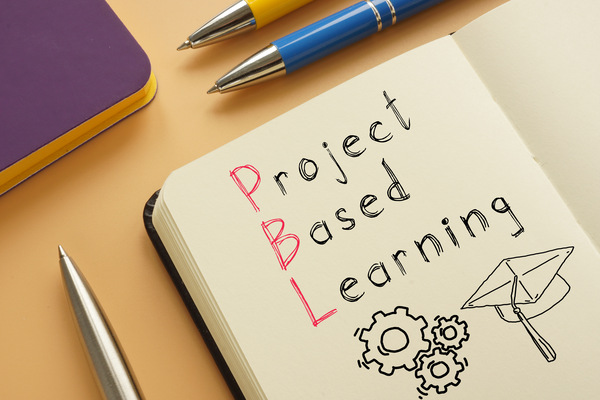The world is a big and exciting place, filled with adventure and ideas. The world is also more and more online. Even though you explore Earth with your fingertips, the reality of kids in other lands and their online experiences may surprise you.
CHINA
The largest country on Earth has the most people online. 800 million people in China use the Internet, but that makes sense because it has the most people living there. The Chinese also see a different online world than other people, because the government controls Internet searches and there are some websites that the Chinese government keeps from coming up when people do a Google search. This is a problem that companies still fight about.
Kids in China mostly use QQ or WeChat to connect with their friends. Unlike kids in the US, Canada or most countries in Europe, kids tend to use the internet for school or to chat with small groups of friends. Kids in China also know that too much Internet can hurt their school marks and keep them from being who they want to be when they grow up.
NIGERIA
People in this West African country are quickly becoming huge Internet users. The biggest problem is that electricity isn’t always available. The power can go out a dozen times a day. Children lucky enough to have Internet service tend to concentrate on education, because for many, becoming educated will help them escape poverty. Unfortunately, many who are educated grow up to use the Internet for crime. Pretty much everyone online has come across a Nigerian scam. Hopefully, as more children get a good education, fewer will turn to scamming.
INDIA
If you are between the ages of 8 and 13 and live in India, you are probably using Snapchat to connect with your friends. Parents of those kids don’t like Snapchat because they can’t see what their children are sharing. Most parents think that they know what their kids do online, but about half of those kids disagree—those are kids who spend time online with activities their parents don’t know about.
To help protect kids, India has passed laws that make going online illegal for children under the age of 18. That has not stopped kids from signing up for Facebook and Google accounts. India is working hard as a country to better watch their children as they enter the online world.
JAPAN
Japan has kids that spend so much time online, they are suffering from physical and mental problems. Many can’t sleep or concentrate, have problems eating and are becoming physically unfit, to name only a few of the symptoms. Doctor’s call this either Internet Use Disorder or Problematic Internet Use. Boys are more likely to have problems due to playing games online. Girls are more likely to have problems with messaging and social platforms.
Parents, doctors and school officials are looking for ways to help bring children back to the real world. Many Japanese parents are turning to camps where kids are put on an Internet “fast.” Instead of going online, children go outside and play, talk with each other and even go into counseling.
YOU
You are very lucky. You are reading this, so, obviously, you have a computer or a smart phone. You also have an internet connection. You can learn about our planet and can read different points of view. That isn’t the case for all kids in the world.
Remember, life is much bigger than your social platform and friends. We can all learn from each other to better explore the Internet while living fun, happy lives in the real world.
The Best Place in the World to Live
The world is filled with many strange and interesting things. One of those things is the weather. People are always grumbling about it. Many think that life would be so much better to live if only they moved to a better place. The fact is, every place is both the best place to live and the worst place to be, depending on the time of year. Let’s take a little trip. Grab your globe or a map of the world and buckle up.
Many people in northern climates dream of living on the equator. After all, they say, life would be so much better without cold and snow. Rainy season in Mexico can last from May to November. That’s seven months where outdoor activity is sloppy and wet. When the rain stops, the world blooms in green and flowers that would shame a rainbow. The lush growth makes places like this a wonderful place to live—after rain season, that is.
All up and down the southern Atlantic coast (check your map) is where you find hurricanes. They are the wicked monsters of weather, blowing cars and homes and even chunks of bridges up in the air. Millions of people have to live with damage caused by hurricanes each year. Most of the damage is in places known for hot, pleasant weather, like Florida, Puerto Rico, Haiti, Central America and the east coast of Africa.
Maybe you’ve longed to live in someplace known for easy, comfortable climate, like, say, California or Switzerland. Okay. But be warned that these are places known for mudslides. Mudslides occur when large amounts of water flow down steep slopes. The mud can be so thick, it can wash away whole towns.
Mudslides and landslides happen all over the world, from Nepal to Peru to Southeast Asia and back to Venezuela. There are gorgeous mountains and lush vegetation—but a good rain can send a mountain sliding down.
Some of the most sunniest places in North America are in winter climates. The temperature is cold and well below freezing, but seeing the bright sun every day can be uplifting. People who live along the Pacific coast enjoy warmer winters, but during the winter the it’s mostly cloudy. In certain areas it can rain continuously for 3 or 4 months straight. In those cases, the sky can be very dark on a daily basis.
Many hot countries are too hot to go out and play during the middle of the day. Lovely island countries like Japan can face tsunamis, which are huge, powerful waves. The wide prairies have to deal with tornadoes. No matter where you live in the world, the weather can be wonderful or it can unpleasant.
The planet is a dynamic place with changing seasons and weather conditions. Luckily, human beings are smart. We are adaptable. We can live happily almost anywhere. The trick is to understand that no place is perfect and every place has its magic and beauty.
True, there may be reasons why your parents decide to move your family because of a job or finding a neighborhood with a good school for you. But wherever you are, when bad weather comes, you have the power to get through it. You don’t have to move to enjoy the world. Just listen to your parents and put on that scarf!
5 Little Things That Make the World Better
Every morning you wake up to a new day. You have a fresh day to have fun, get into trouble, be lazy, eat something tasty—and make the world better. Here are 5 LITTLE THINGS that take only seconds, and you can do them! When you do one every day, you make the world a better place.
1. Pick up a piece of garbage.
That’s all. You see a gum wrapper in a parking lot—pick it up and put it in the trash bin. It may seem small, but this one little act makes your world a little better every time you do it! And if you pick up a piece of garbage every day of your life, imagine the pile. That is the difference you can make.
2. Give someone a compliment.
“Hey, good job on that paint job.” “I like how you got that program to work.” “Cool moves!” No matter who you hang with, no matter what you are doing, you will have a chance to say something positive to someone in your life. That kind act can make a huge difference to the person you compliment. That person will feel better and think better about the world—and you. And it’s so easy. Practice on your parents.
3. Learn one thing every day.
We’re not talking about the learning you do at school or that stuff your parents keep reminding you about. You have eyes and ears and a brain that takes in the world. Ask yourself one thing about what you see or hear and find the answer. There is a lot you can learn online, just Google it!
You only need to do this once a day to get into the habit of thinking. You could be riding your bike and think: When did humans first discover the wheel? You could see a weird looking bird and wonder what kind of bird it is. Why do you have those two sharper teeth on the sides of your mouth?
Learn about interesting days in history. By asking questions and looking for answers, you will make the world a better place, because the world needs more people who think and look for knowledge.
4. Say thank you.
Like giving people compliments, when you thank someone, you are connecting with that person. The more people connect—even when it’s just thanking a clerk who hands you a napkin—the world become a little better.
5. Smile! 🙂





 There’s something fun and kind of cozy—and maybe a little snobbish—about using the same shampoo that Selena Gomez uses. You feel special using the same foundation as Kim Kardashian. You send flowers to your mom, just like
There’s something fun and kind of cozy—and maybe a little snobbish—about using the same shampoo that Selena Gomez uses. You feel special using the same foundation as Kim Kardashian. You send flowers to your mom, just like 

